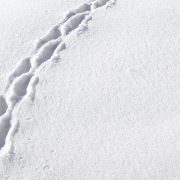Historical Snow Fall in the Sierra Nevada 2017
.
It is snowing heavily in California this winter.
The US newspapers headlines read:
- “Sierra Nevada snowpack is biggest in 22 years.”
- “Sierra Nevada historical snow fall.”
These are good news. As all this snow probably will set an end to the drought in California.
Excellent!
But…
.
… if you are going to thru hike the PCT this summer, you might have two problems:
A) It will take some time for all this snow to melt.
B) The melting snow will flood the rivers and make them dangerous to cross.
The first 1’200 km will not be affected too much, as the beginning of the PCT mainly goes through the desert.
But as of “PCT mile 700” (km 1’100), the trail leads up to the Sierra Nevada.
The snow might not be gone by the beginning of June, when I intend to hit the Sierra.
The rivers which I need to cross might be too fast and high to traverse unharmed.
Hmmm.
.
“Will it be no problem perhaps and should I not worry?”
“Will it be difficult?”
“Will it be downright dangerous?”
The answer is:
“I don’t know!”
“Is hiking in the Sierra comparable to hiking in the Swiss Mountains?”
If so, then it could be indeed dangerous if one goes up there too early in the year.
But perhaps the Sierra is not “like the Alps” at all, but more friendly and kind to hikers?
The answer here as well is:
“I don’t know!”
.
So to ease my mind, I signed myself up to the following course:
“How to safely cross rivers and hike over ridges in the Sierra after a high snow year.”
“Sounds good, no?”
The cool thing is, this course takes place right on the PCT itself.
I will meet up with the school at Chicken Spring Lake, right at mile 747 (km 1’202).
For five days, we will wade through the first few rivers together and ice-axe our way up and down passes together.
According to mountain safety teacher Ned, the Master of Ceremony:
“we learn ascent, descent, and traversing techniques, to include self-arrest, glissading, and risk recognition. We will take advantage of the presence of snow bridges across creeks, affording us dry and easy crossings (extensive clinic on assessing snow bridges). We discover, also, that in the warm afternoons, the snowpack may get ridiculously soft, meaning we will be learning how to recognize and avoid postholing conditions and the sub-surface hidden hazards that exist within the snowpack which can lead to injuries and fatigue”.
So I will be in good hands, right from PCT mile 747 (km 1’202) up to PCT mile 785 (km 1’263), where I will be sent off again to my own destiny on my way up to Canada.
The mountain safety course is, well, not exactly a bargain though.
“Call me a scaredy-cat if you must. But this course gives me peace of mind. Which I think is worth a few bucks!”
Learning of the day:
Peace of mind does not come free of charge!
.



Isn’t it amazing what strength of will and a clear decision can do! Once you decided you want to go on with the PCT, not even high snow or expensive necessary courses can stop you! Please accept all my admiration :-)
That’s right Cristian! I am amazed myself! Oh and, thank you for your supportive words! I might need lots of those on the trail as well!!
Take it easy, it is always different as in the last 10 years before!
True words Stefan!!